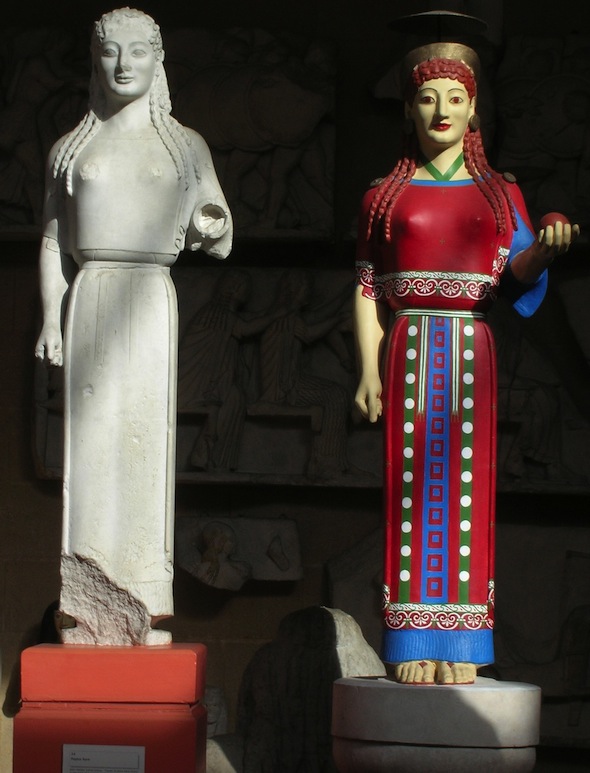Find the Force! - Czerp Moc!
|
WITH OUR MYTHICAL DISCOVERIES |
Paint the Muses!
Muses were daughters of Zeus and Mnemosyne, the goddess of memory. They inspired artists. Their leader was Apollo known as Musagetes (Μουσαγέτης – Guide of the Muses). Eventually, each Muse (there were nine) assumed care of a different area of art. In the third century BC, the ruler of Egypt, Ptolemy I Soter (the Saviour) founded in Alexandria a Museion – the place where Muses were worshipped, and where scholars and artists worked. Muses are still today present in culture – you may know them from Disney animated film Hercules (1997):
Each Muse had her attributes (objects), she carried with her. They make it easy to recognize her. You will find below a list of Muses with their attributes. Muses inspired creators, and still today, we can admire works of art made in Antiquity. We may expect many surprises. For example, looking at the ancient statues, you should remember that they were not only white – thanks to today’s technology, we may attempt to determine their true colours. This is how could look Kora (a young girl) currently held at the Museum of Classical Archaeology of the University of Cambridge, in the United Kingdom:
And what Muses could have looked like? Now, each of you can use your imagination and colour images of the mythical protectors of artists, using these, specially prepared drawings of Muses from years ago:
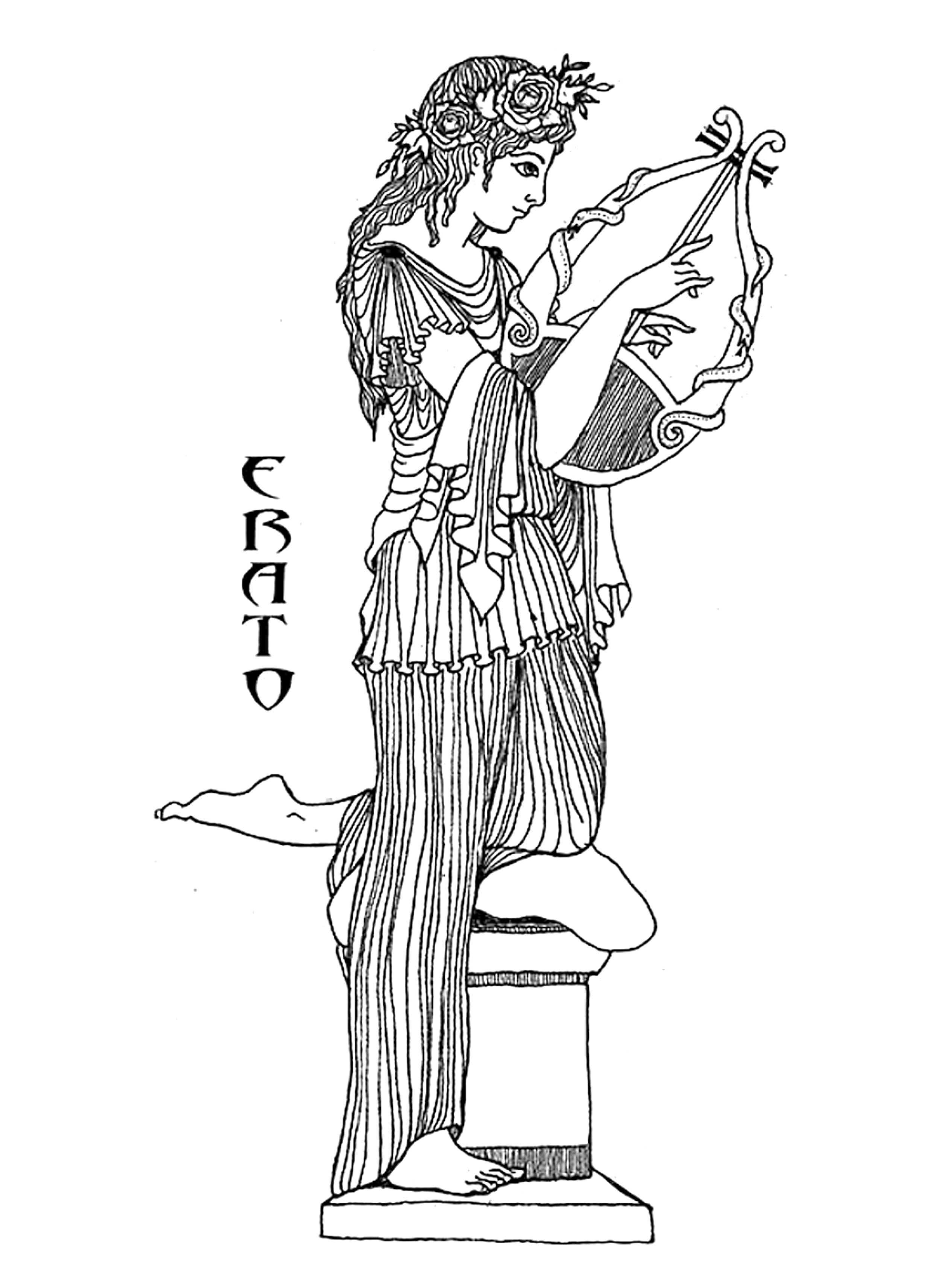 | Erato | Muse of love poetry, equipped with a small lyre |
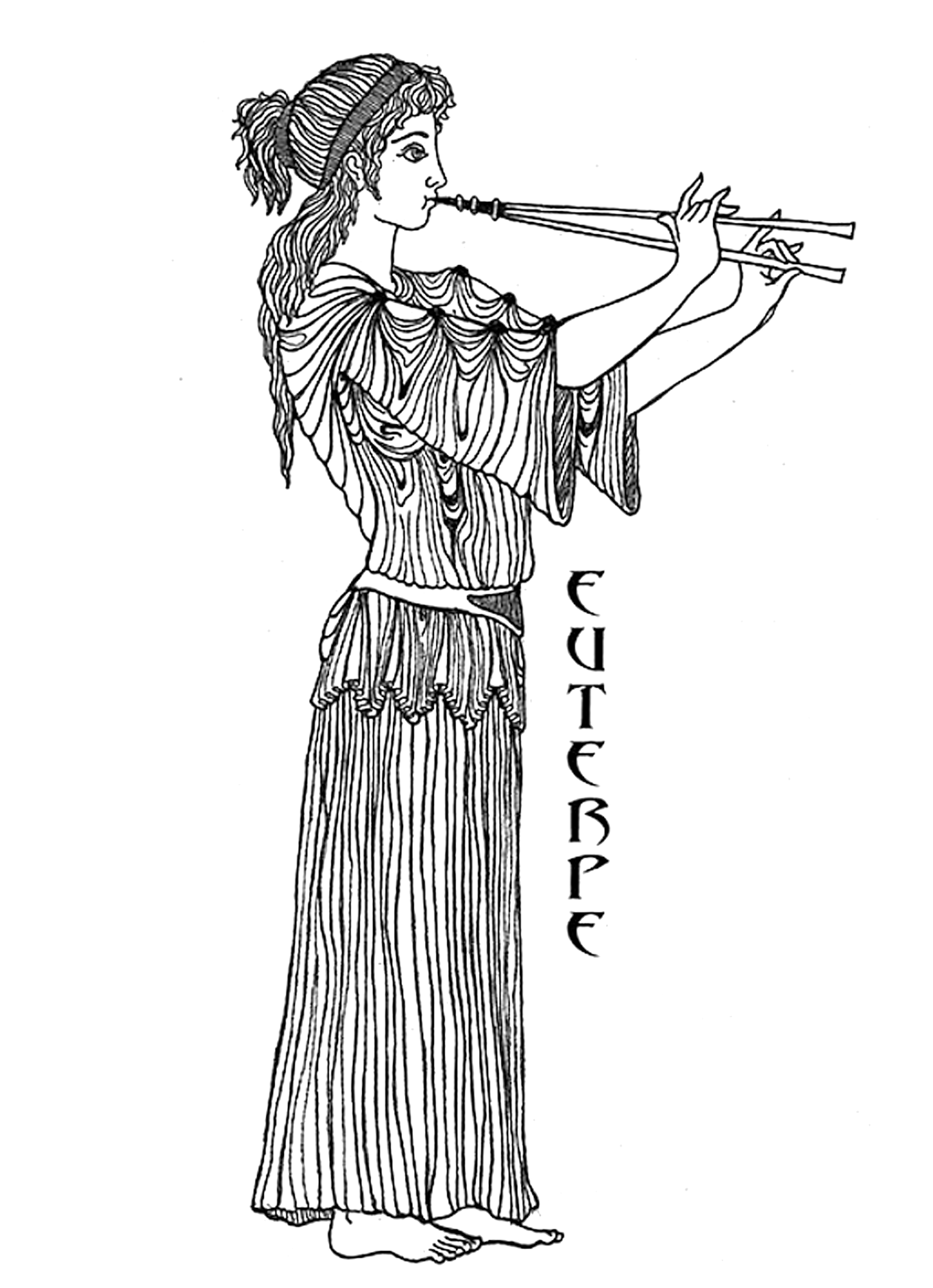 | Euterpe | Muse of lyrical poetry, plays on an aulos (a kind of ancient flute – here, you can listen to what it probably sounded like) |
 | Calliope | Muse of epic poetry, represented with a stylus and a writing tablet, “our” Calliope holds a papyrus, on the illustration, you can also see a laurel wreath – the symbol of victory) |
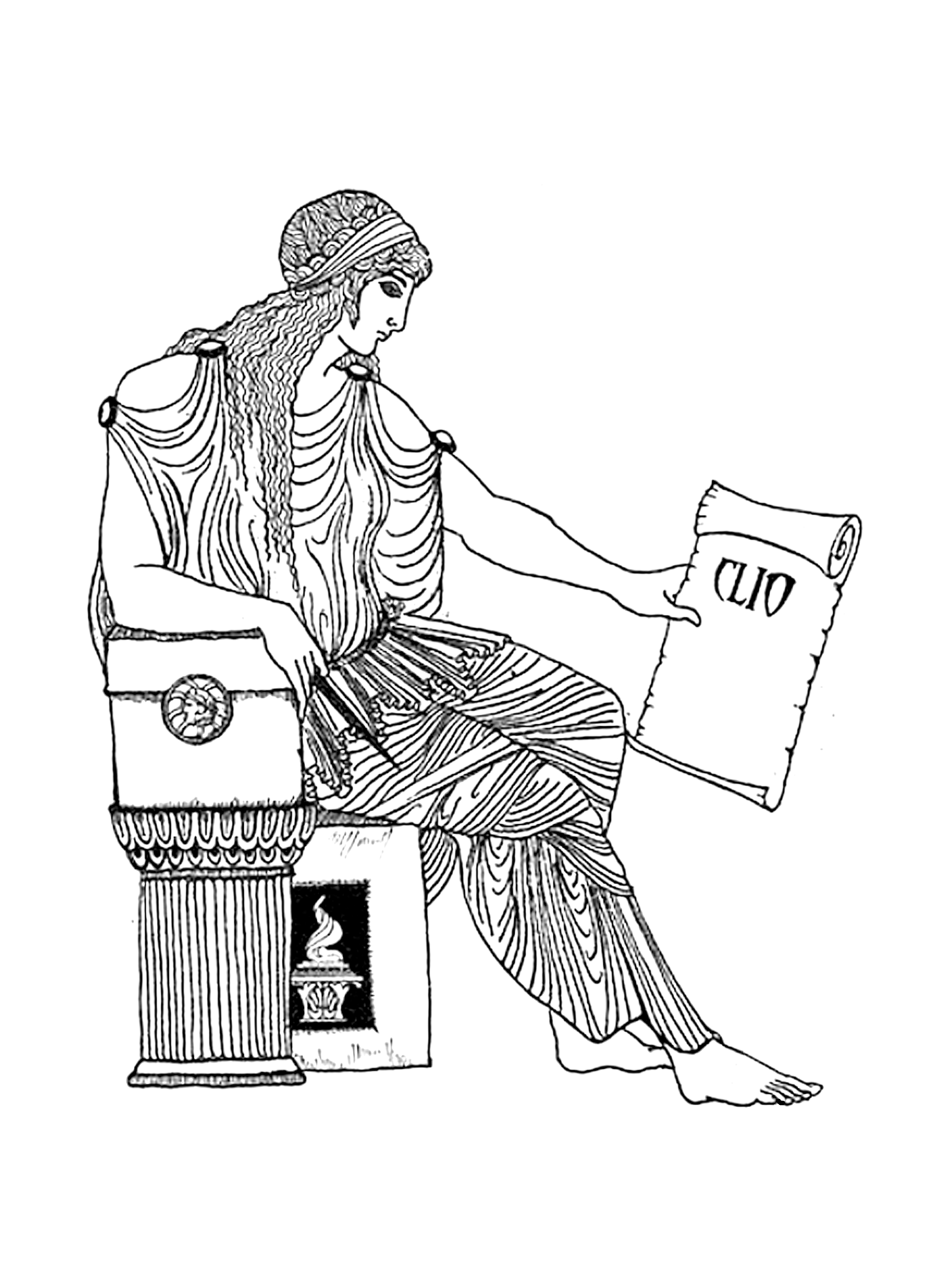 | Clio | Muse of history, holds a scroll of parchment |
 | Polyhymnia | Muse of choral poetry, shown without an attribute, but with a very pensive expression on her face |
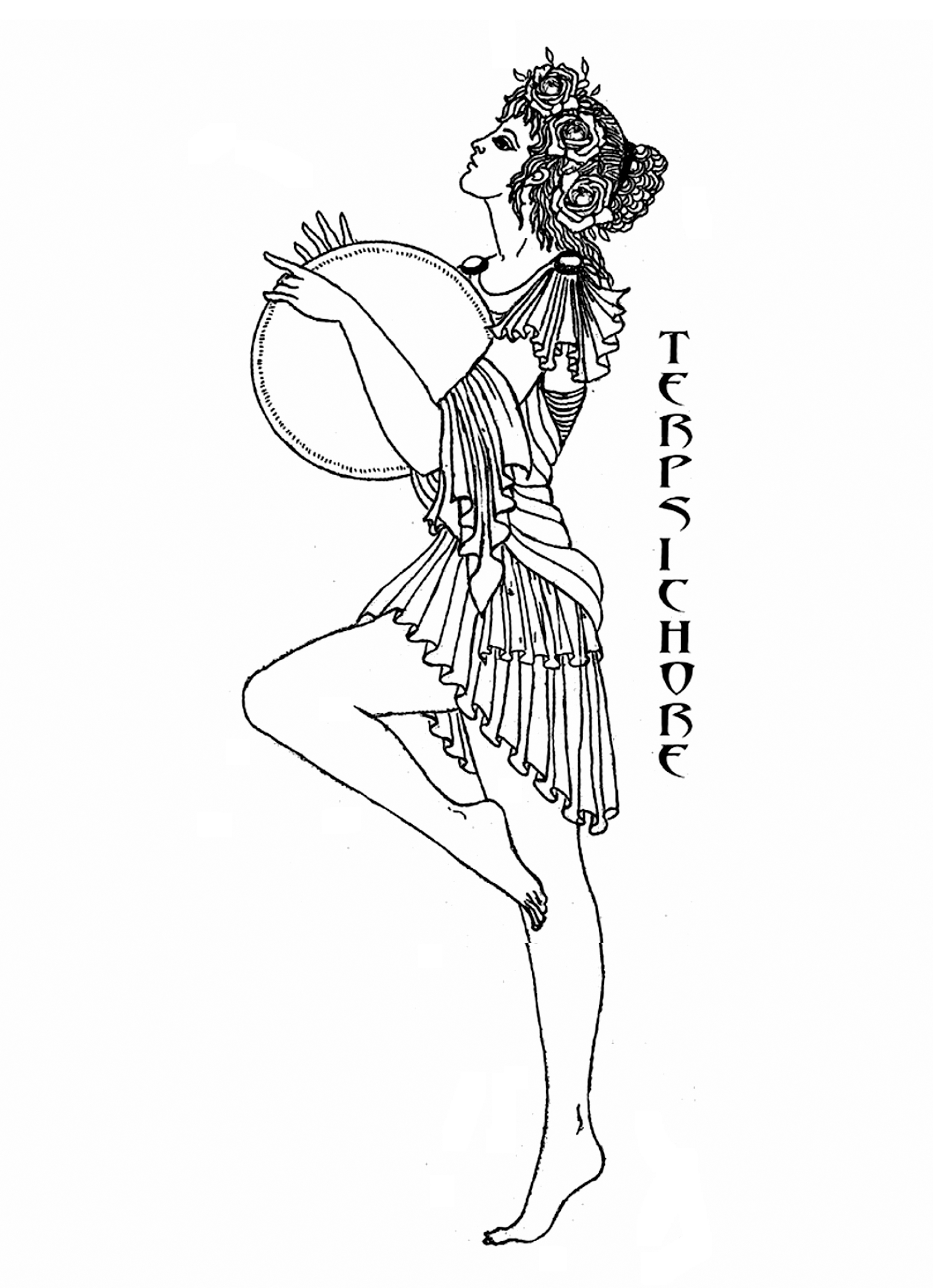 | Terpsichore | Muse of dance, she holds a lyre and a plectrum (a tool to pluck or strum stringed instruments) |
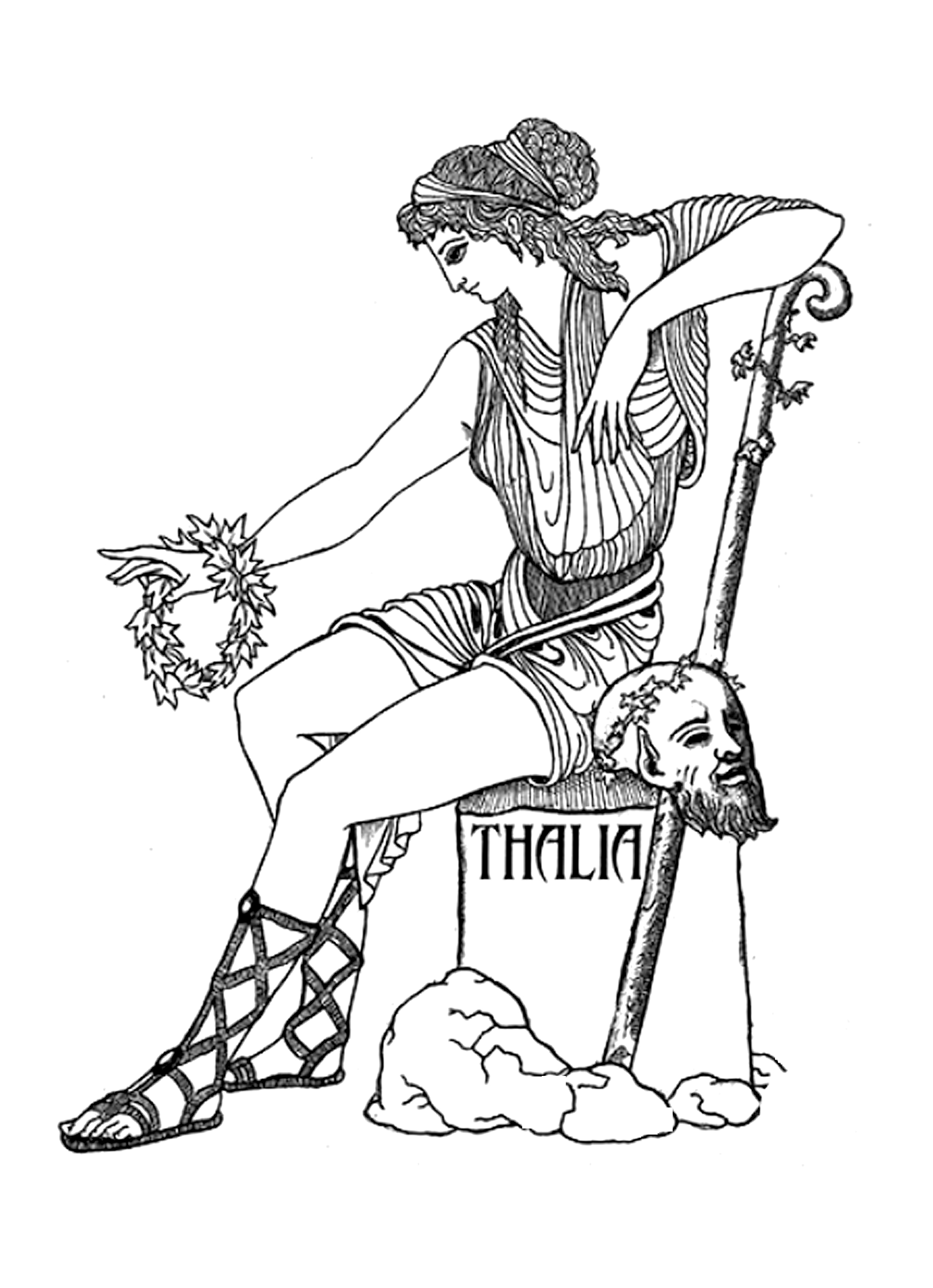 | Thalia | Muse of comedy, with a comic mask |
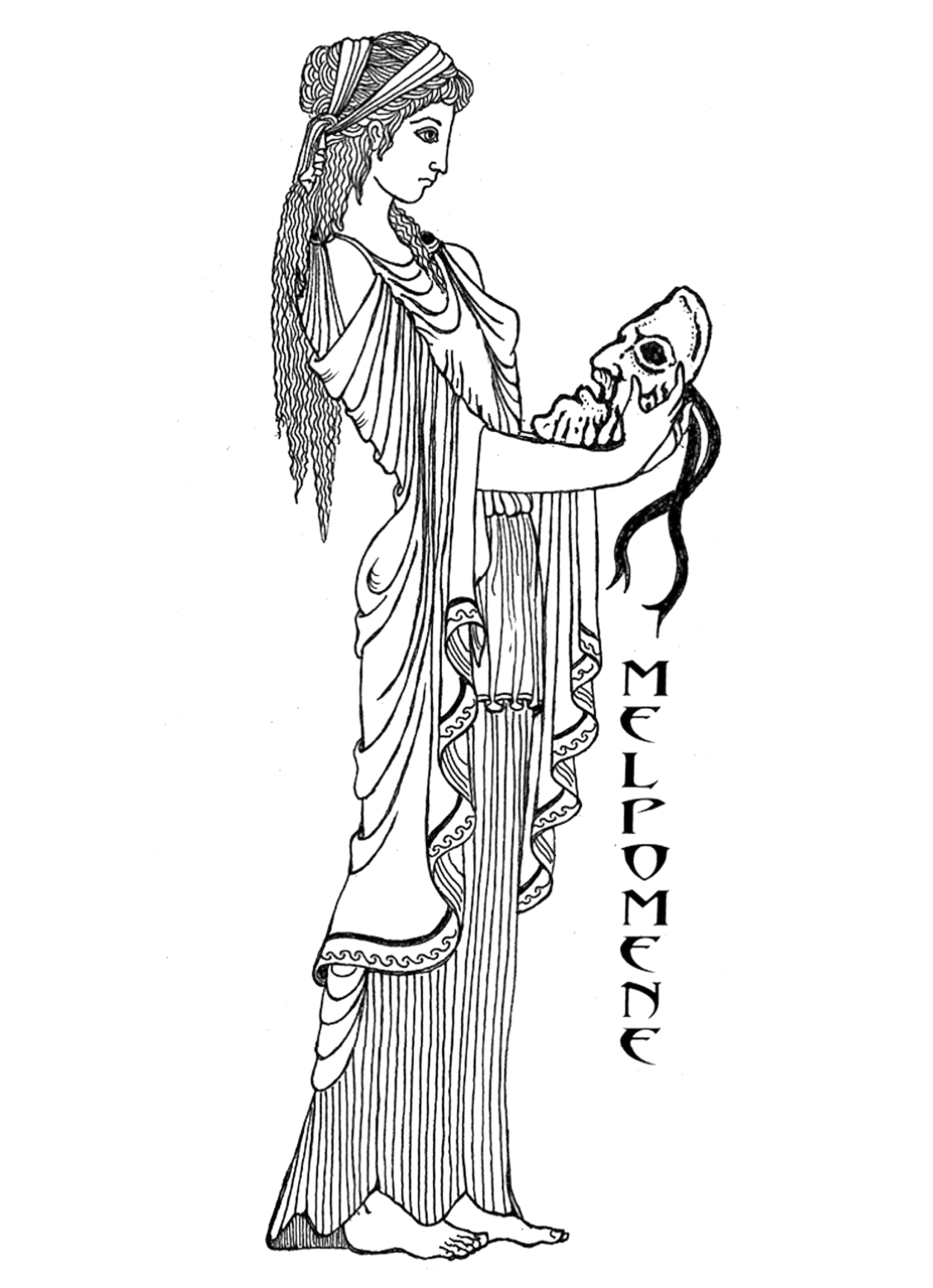 | Melpomene | Muse of tragedy, with a tragic mask |
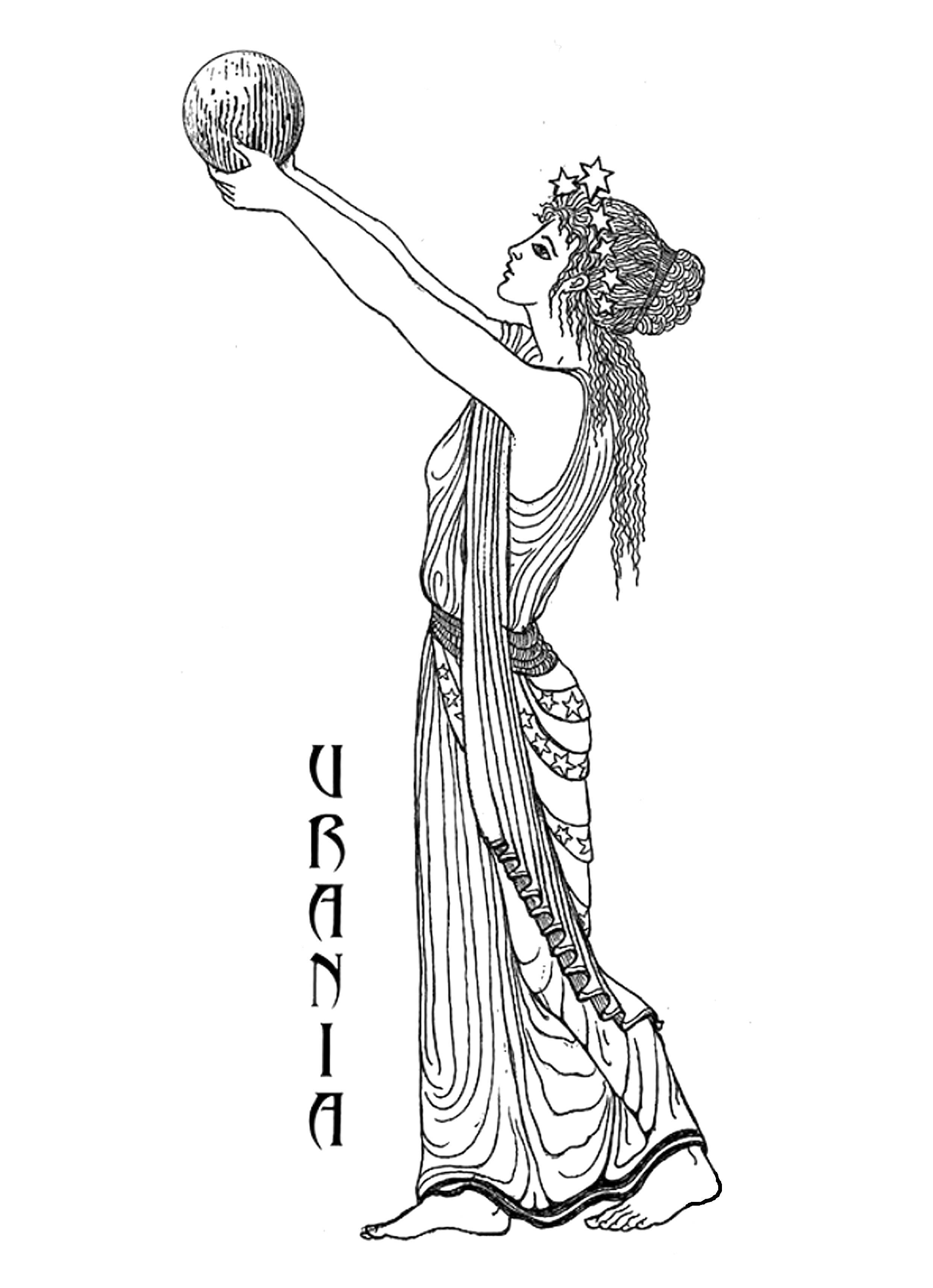 | Urania | Muse of geometry and astronomy, represented with a compass and a globe |
Let the Muses Inspire You!
We are looking forward to seeing your artwork. If you wish, you may address them to: strycharczyk@al.uw.edu.pl, we will publish the most interesting ones on the website of the project.
Illustrations (based upon old drawings) prepared by Zbigniew Karaszewski, Polish text – Katarzyna Marciniak, English version – Elżbieta Olechowska, Italian translation – Beatrice Palmieri, Ukrainian version – Olha Kolesnyk.














